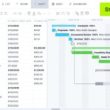By Frank, Senior Electronics Engineer (USA)
Disclaimer: This article reflects personal insights and experiences, and is not affiliated or endorsed.
When I first started designing electronics, I found that a solid grasp of the fundamental components in an electrical circuit was essential.
From simple LED flashlights to advanced RF amplifiers, every device relies on these building blocks to operate reliably.
In this guide, I’ll share insights into each core element, how it works, why it matters, and real‑world tips drawn from my own projects.
1. Power Source (Battery or Power Supply)
Every circuit needs a “pump” to drive electrons through its pathways. In most hobby and professional contexts, that role is filled by:
Batteries (e.g., AA, Li‑ion): Portable, self‑contained, and available in many chemistries. I often reach for a 18650 cell when prototyping because of its high energy density and steady voltage.
Bench Power Supplies / Wall Adapters: In the lab, regulated supplies let you dial in precise voltages (±0.1 V) and current limits. They’re indispensable when you’re debugging or stress‑testing boards.
Generators / Mains Power: Large‑scale or industrial systems draw from AC mains, then convert to DC via rectifiers and filters.
Always verify the maximum current capacity of your power source against your circuit’s needs. Overdrawing can cause voltage sag, noise, or irreversible damage.
2. Conductors (Wires and PCB Traces)
Conductors provide the “highway” for electron flow. In practice:
Copper Wires: Solid or stranded strands, chosen by current rating and flexibility. For runs under 1 A on prototypes, AWG 22 solid is often enough, but I switch to stranded for boards that move [⁴].
PCB Traces: In professional layouts, trace width is calculated based on current and temperature rise. Online calculators (e.g., IPC‑2152 standard) help ensure reliability.
For currents above 2 A on a two‐layer board, consider copper pours or multiple parallel traces to control temperature and voltage drop.
3. Resistors (Control the Flow of Current)
Resistors are the “traffic cops” of a circuit, governing voltage and current distribution. Key details:
Fixed vs. Variable: Fixed resistors (±1 % tolerance) ensure repeatability. Potentiometers add user‑tunable control (e.g., audio volume, contrast knobs).
Power Rating: Always match wattage to expected dissipation. I once had a ¼ W resistor smoke when driving an LED array — upgrading to a ½ W part solved it instantly.
Applications: From setting bias currents in amplifiers to forming voltage dividers (e.g., for ADC reference levels), resistors underpin almost every function.
Did you know?
A simple pulldown resistor (10 kΩ) can keep inputs at a defined logic level and prevent floating states.
4. Capacitors (Store and Release Energy)
Capacitors act like tiny batteries, smoothing and timing circuit behavior:
Decoupling / Bypass: Placed close to IC power pins (0.1 µF ceramic + 10 µF electrolytic) to shunt high‐frequency noise to ground.
Energy Storage: Supercapacitors (up to several farads) can bridge power during short outages in data‑logging systems.
AC Coupling: In audio and RF paths, capacitors block DC offsets while passing AC signals.
Always place the smallest‐value ceramic capacitor closest to the IC, then add larger electrolytics nearby to handle lower‑frequency fluctuations.
5. Inductors (Store Energy in Magnetic Fields)
Inductors complement capacitors in filtering and energy conversion:
Power Supplies: In buck/boost converters, inductors smooth pulsating currents from switching elements. Choosing the right inductance and current rating is critical to minimize ripple [¹¹].
RF Circuits: Tuned LC tanks (inductor + capacitor) set resonant frequencies in radios and filters.
EMI Suppression: Ferrite beads on input lines can block high‑frequency interference.
When prototyping switching regulators, breadboard inductors can radiate EMI, shielded or toroidal types often yield cleaner results.
6. Switches (Turn Circuits On and Off)
Switches let us control when and how current flows:
Mechanical: Rockers, pushbuttons, DIP switches. I keep a stock of tactile switches for user interfaces and toggle switches for panel controls.
Electronic (Transistors/MOSFETs): In high‑speed digital designs, MOSFETs act as switches, driven by logic levels. They’re essential in microcontroller‑controlled power stages.
Use a “soft‑start” MOSFET arrangement with a gate resistor and RC network to prevent inrush currents on large capacitive loads.
7. Diodes (Control the Direction of Current)
Diodes enforce one‑way traffic:
Rectification: Silicon or Schottky diodes convert AC to DC. I favor Schottkys in low‑voltage supplies for their low forward drop.
Protection: Flyback diodes across inductive loads (motors, relays) clamp voltage spikes and protect driving transistors.
Signal LEDs: When current flows through an LED, it emits light — an easy visual indicator for system status.
Always choose a diode with a reverse‐voltage rating above your circuit’s maximum and a forward‐current rating that exceeds your peak load.
Conclusion & Next Steps
Understanding these seven core components is the foundation for any electronics project, whether you’re building a simple sensor node or a complex RF transceiver. Once your schematic is solid, the next step is turning it into a PCB layout.
For reliable, cost‑effective PCB manufacturing and assembly, I recommend JLCPCB. I’ve used their service on numerous prototypes, orders arrive quickly, solder mask and silkscreen are crisp, and their DFM reports help catch layout issues before fabrication. Give them a try on your next project!






